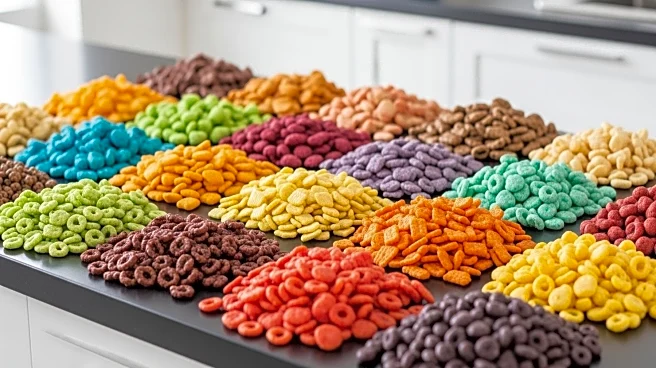What's Happening?
Convenience stores are facing challenges in their candy aisles due to regulatory changes and rising ingredient costs. The FDA, as part of the Make America Healthy Again initiative, is phasing out synthetic dyes, including red dye No. 3, which affects many candy products. This has led to reformulations and potential cost increases for manufacturers. Additionally, rising cocoa prices are prompting chocolate companies to raise candy prices, impacting sales. Convenience stores are experiencing a decline in candy volume, with fewer households purchasing candy compared to previous years.
Why It's Important?
The shift away from synthetic dyes reflects a broader consumer trend towards natural ingredients, impacting manufacturers and retailers. Reformulating products to comply with new regulations may increase production costs, potentially affecting pricing and consumer demand. Rising cocoa prices further exacerbate cost pressures, leading to higher retail prices. These challenges could result in decreased candy sales, affecting convenience store revenue. The industry must adapt to changing consumer preferences and regulatory landscapes to maintain profitability.
Beyond the Headlines
The candy industry's challenges highlight the intersection of health initiatives and economic pressures. As consumers increasingly avoid artificial ingredients, manufacturers must innovate to meet demand for healthier options. The SNAP program's restrictions on candy purchases further illustrate the political dimension of dietary choices. Retailers may need to diversify product offerings, focusing on healthier snacks to offset potential losses in candy sales. The evolving landscape presents opportunities for growth in nutritional and protein-packed snacks.











